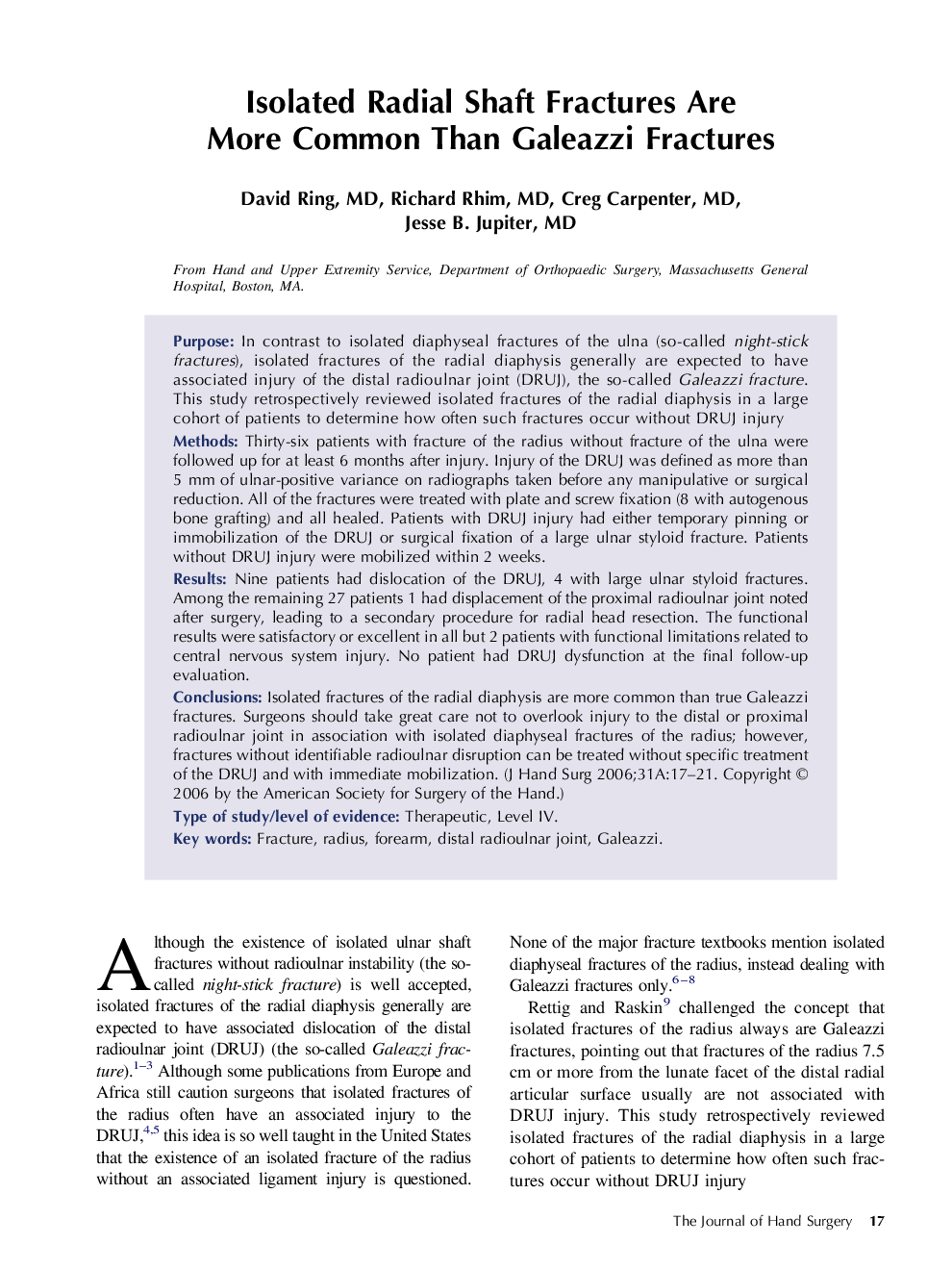| کد مقاله | کد نشریه | سال انتشار | مقاله انگلیسی | نسخه تمام متن |
|---|---|---|---|---|
| 4070989 | 1604467 | 2006 | 5 صفحه PDF | دانلود رایگان |

PurposeIn contrast to isolated diaphyseal fractures of the ulna (so-called night-stick fractures), isolated fractures of the radial diaphysis generally are expected to have associated injury of the distal radioulnar joint (DRUJ), the so-called Galeazzi fracture. This study retrospectively reviewed isolated fractures of the radial diaphysis in a large cohort of patients to determine how often such fractures occur without DRUJ injuryMethodsThirty-six patients with fracture of the radius without fracture of the ulna were followed up for at least 6 months after injury. Injury of the DRUJ was defined as more than 5 mm of ulnar-positive variance on radiographs taken before any manipulative or surgical reduction. All of the fractures were treated with plate and screw fixation (8 with autogenous bone grafting) and all healed. Patients with DRUJ injury had either temporary pinning or immobilization of the DRUJ or surgical fixation of a large ulnar styloid fracture. Patients without DRUJ injury were mobilized within 2 weeks.ResultsNine patients had dislocation of the DRUJ, 4 with large ulnar styloid fractures. Among the remaining 27 patients 1 had displacement of the proximal radioulnar joint noted after surgery, leading to a secondary procedure for radial head resection. The functional results were satisfactory or excellent in all but 2 patients with functional limitations related to central nervous system injury. No patient had DRUJ dysfunction at the final follow-up evaluation.ConclusionsIsolated fractures of the radial diaphysis are more common than true Galeazzi fractures. Surgeons should take great care not to overlook injury to the distal or proximal radioulnar joint in association with isolated diaphyseal fractures of the radius; however, fractures without identifiable radioulnar disruption can be treated without specific treatment of the DRUJ and with immediate mobilization.Type of study/level of evidenceTherapeutic, Level IV.
Journal: The Journal of Hand Surgery - Volume 31, Issue 1, January 2006, Pages 17–21